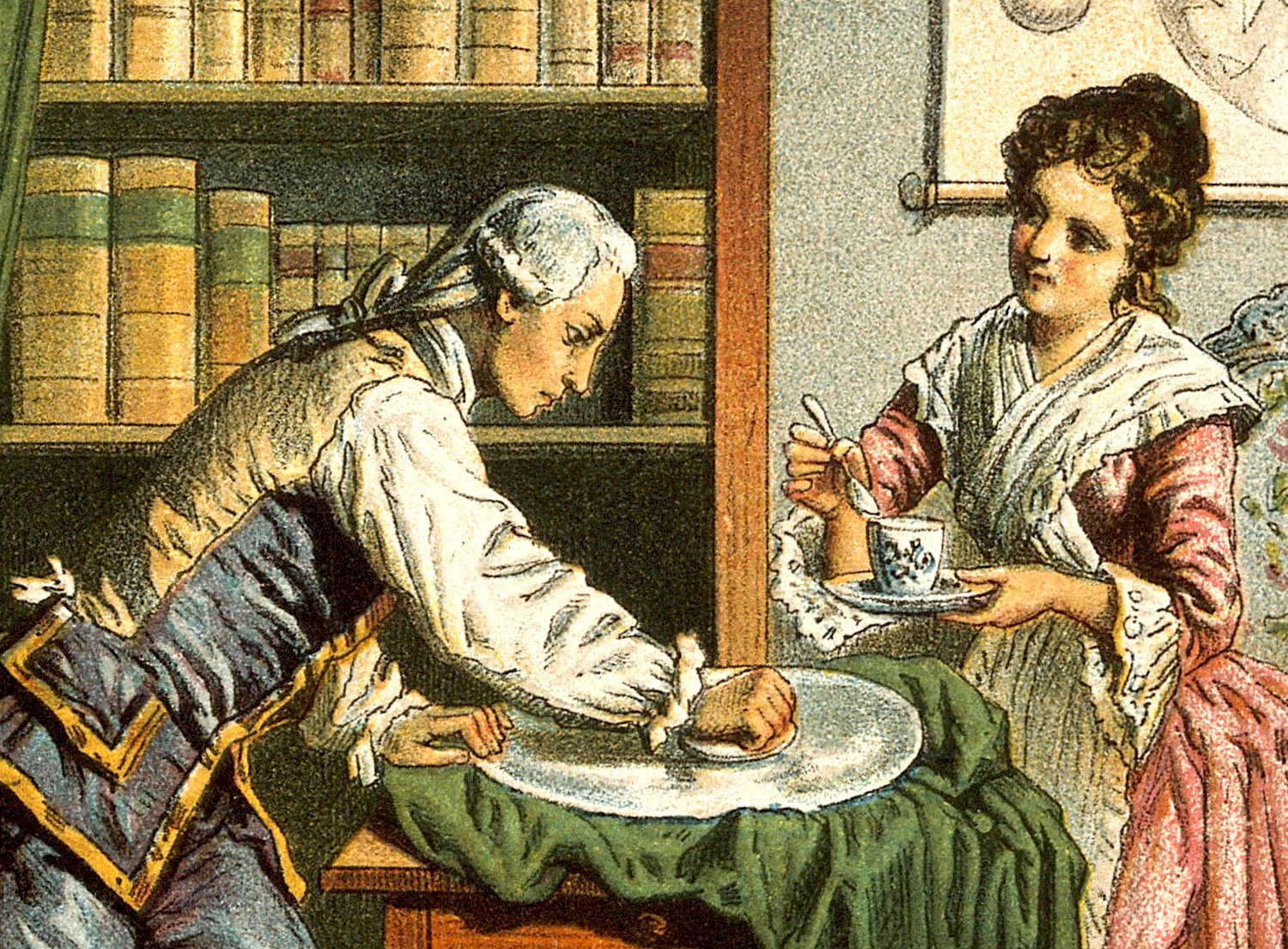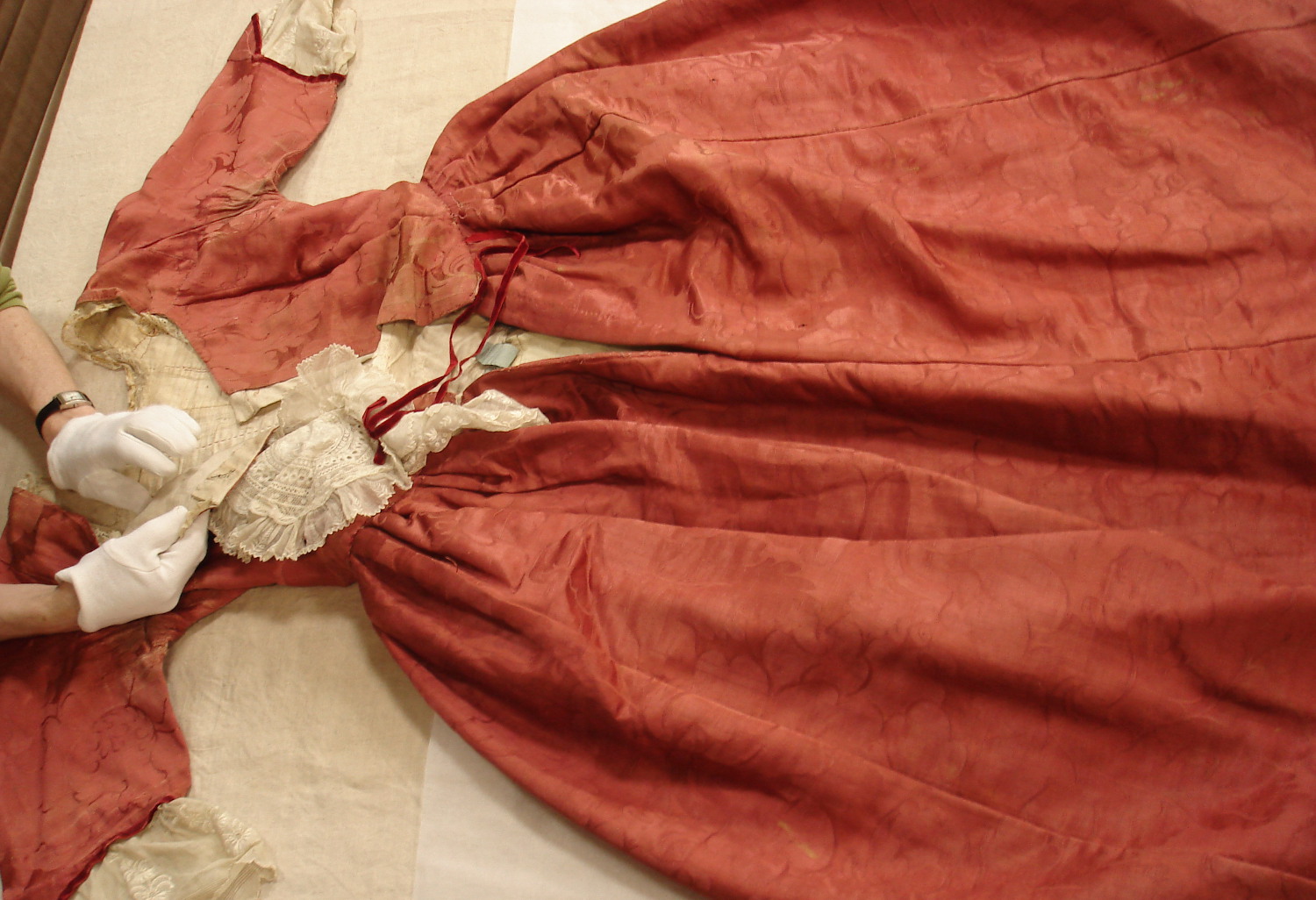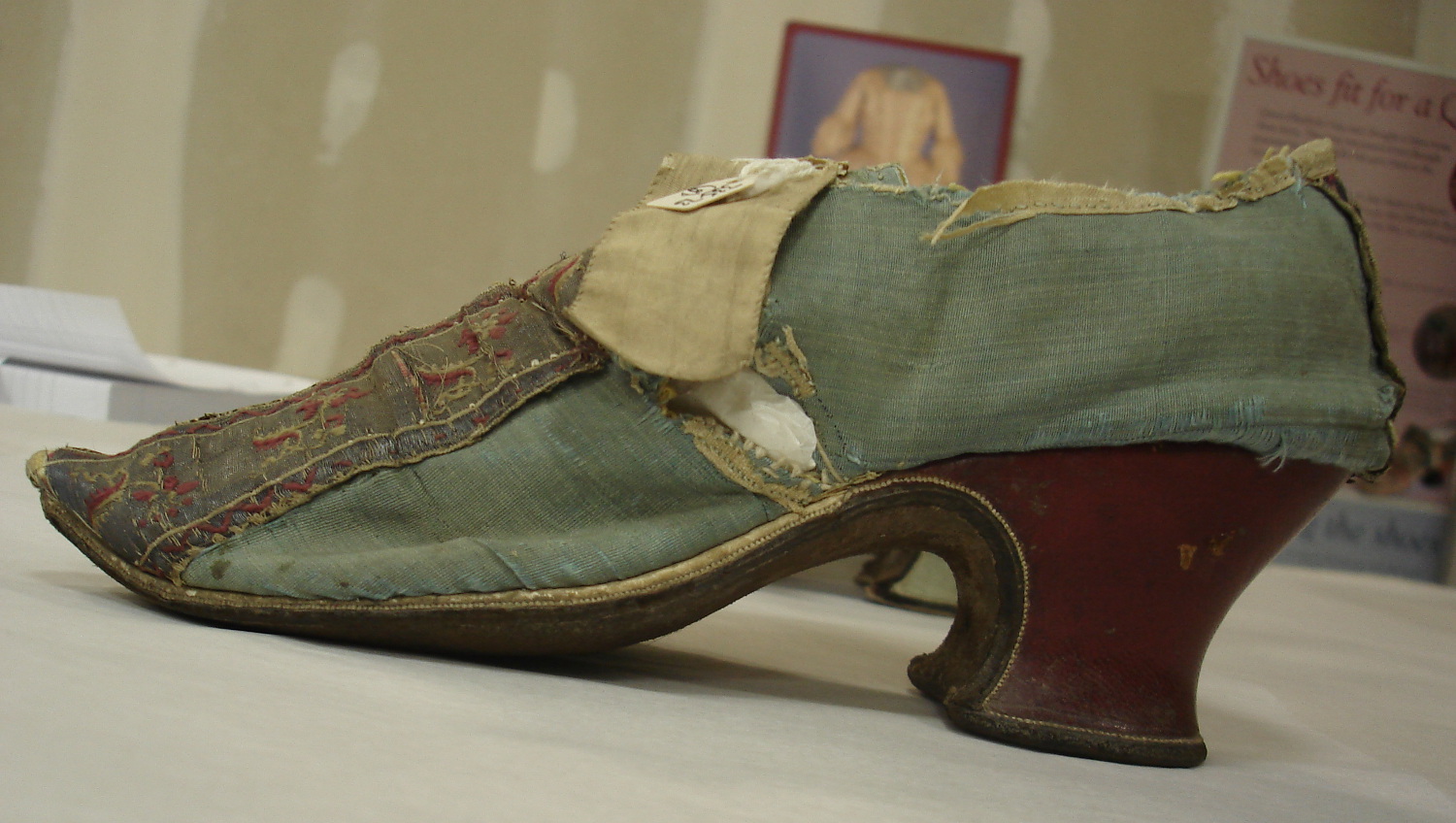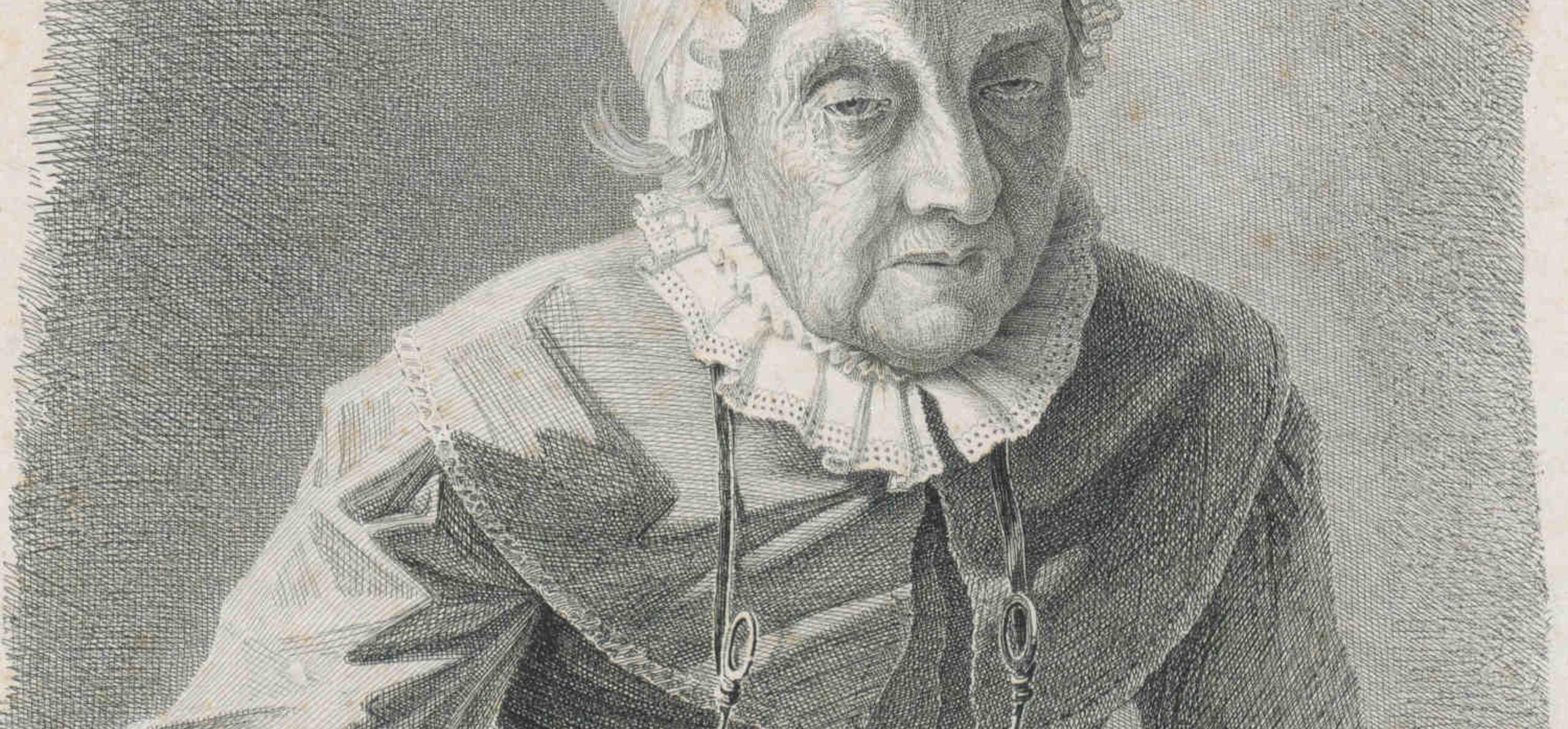Caroline Herschel (1750-1848) was one of Berkshire’s most important residents, and some of her costume is in the museum’s collection.
Caroline was a German-British astronomer and the sister of astronomer Sir William Herschel (1738 - 1822) with whom she worked throughout both of their illustrious careers. Her most significant contribution to astronomy was the discovery of eight comets, one of which is named after her.

Sir William Herschel and Caroline Herschel. He is polishing a telescope element, probably a mirror and Caroline adds lubricant (Wellcome Images, a website operated by Wellcome Trust, a global charitable foundation based in the United Kingdom)
Caroline was born on 16 March 1750 in Hanover, Germany - the eighth of 10 children. When she was aged 10, she caught typhus, which stunted her growth. Her adult height was reported as four feet three inches.
In 1772, she left Hanover to live with William in Bath, England. She initially assisted his endeavours as a musician, but he became increasingly interested in astronomy and so did she.
Caroline and William moved from Bath to Datchet, Berkshire in 1782 after William was appointed 'The King's Astronomer'. They later moved to Observatory House in Slough where they had their famous 40-foot telescope - at that time the largest in the world.
Caroline herself discovered eight comets, and catalogued 560 previously unrecorded stars, and was the first women to be paid for her scientific work. King George III gave her an annual salary of £50 in 1796 as assistant to her brother. She was the first woman to be awarded the Gold Medal of the UK's Royal Astronomical Society in 1838.

Caroline Herschel's dress from 1750-1780s, very similar to the one shown in the image of William and Caroline!
Reading Museum’s collection has a small group of mid to late 18th century women’s costume that was donated by the Herschel family to the museum. The group consists of three silk dresses, three pairs of shoes and a single shoe. They survived because they were used, and some adapted, for fancy dress in the 19th century.
Study of the group suggests that they were worn by Caroline. The dresses are made for someone of small stature; in fact the overall height of dresses is very similar to Caroline’s supposed four feet three inches.
The dresses and shoes are all made from silk produced in Spitalfields in London and in styles worn in the 1750s to 1780s when Caroline was living in Bath and then Berkshire.
The silk of this red dress was made in Spitalfields by a weaver called Murray in 1739 and made up into a dress after 1750. The dress is full length with a generous skirt, a lined/fitted bodice with pleats sewn down the back and half-length sleeves with lace cuffs. The silk has a large scale woven pattern inspired by nature. The dress is quilted with a thin layer of wool between the lining and the skirt showing it was designed for the British climate!
The shoes all have silk uppers and leather soles. The shoes have ‘latchets’ that would have been fixed in place with a silver buckle.

One of Caroline Herschel's shoes, with blue silk uppers and a red leather heel
Find out more
Visit the Herschel Museum in Bath
Search for Caroline Herschel on Reading Collections Online





